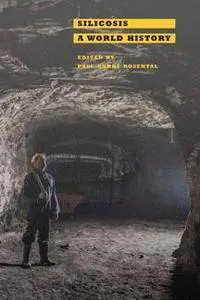Silicosis : A World History
by Paul-Andre Rosental
English | 2017 | ISBN: 1421421550 | 293 Pages | PDF | 17 MB
by Paul-Andre Rosental
English | 2017 | ISBN: 1421421550 | 293 Pages | PDF | 17 MB
Despite the common perception that 'black lung' has been relegated to the dustbin of history, silicosis remains a crucial public health problem that threatens millions of people around the world. This painful and incurable chronic disease, still present in old industrial regions, is now expanding rapidly in emerging economies around the globe. Most industrial sectors—including the metallurgical, glassworking, foundry, stonecutting, building, and tunneling industries—expose their workers to lethal crystalline silica dust. Dental prosthodontists are also at risk, as are sandblasters, pencil factory workers in developing nations, and anyone who handles concentrated sand squirt to clean oil tanks, build ships, or fade blue jeans.
In Silicosis, eleven experts argue that silicosis is more than one of the most pressing global health concerns today—it is an epidemic in the making. Essays explain how the understanding of the disease has been shaken by new medical findings and technologies, developments in industrializing countries, and the spread of the disease to a wide range of professions beyond coal mining. Examining the global reactions to silicosis, the authors trace the history of the disease and show how this occupational health hazard first came to be recognized as well as the steps that were necessary to deal with it at that time.
Adopting a global perspective, Silicosis offers comparative insights into a variety of different medical and political strategies to combat silicosis. It also analyzes the importance of transnational processes—carried on by international organizations and NGOs and sparked by waves of migrant labor—which have been central to the history of silicosis since the early twentieth century. Ultimately, by bringing together historians and physicians from around the world, Silicosis pioneers a new collective method of writing the global history of disease. Aimed at legal and public health scholars, physicians, political economists, social scientists, historians, and all readers concerned by labor and civil society movements in the contemporary world, this book contains lessons that will be applicable not only to people working on combating silicosis but also to people examining other occupational diseases now and in the future.



